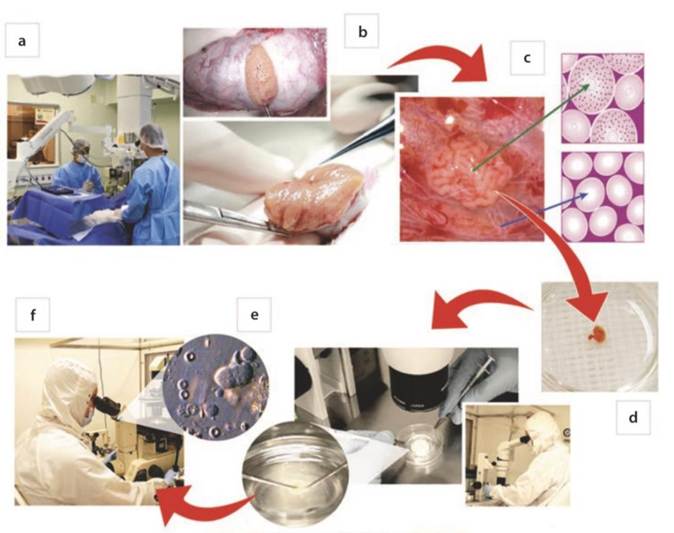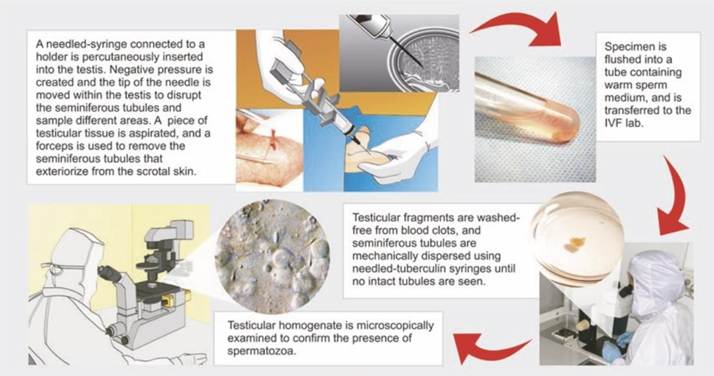Testicular Biopsy: A Key Procedure for Male Infertility Diagnosis and Treatment
Infertility is a growing concern for many couples, and male infertility plays a significant role in this challenge. One of the most effective methods for diagnosing and treating male infertility is a testicular biopsy. This procedure helps identify the cause of infertility, detect abnormalities, and, in some cases, retrieve sperm for use in IVF or ICSI.
If you are considering a testicular biopsy or want to learn more about its benefits, procedure, and recovery, keep reading.
What Is a Testicular Biopsy?
A testicular biopsy is a medical procedure that involves extracting a small tissue sample from the testicles to assess sperm production. The testicles contain seminiferous tubules, where sperm production occurs in a process that takes about 64 days and involves 16 developmental stages.
By analysing the biopsy sample, specialists can determine whether sperm cells are present and evaluate their development. If viable sperm is found, it can be extracted and used in assisted reproductive techniques such as in vitro fertilisation (IVF) or intracytoplasmic sperm injection (ICSI).
For men with azoospermia—a condition where no sperm is found in the semen— testicular biopsy is the only definitive diagnostic method to determine if sperm production is occurring. The biopsy can be performed surgically using the testicular sperm extraction (TESE) method or through a needle aspiration technique like percutaneous epididymal sperm aspiration (PESA). In most cases, the procedure is done under local anesthesias in a sterile environment.
What to Expect from a Testicular Biopsy?
During an open testicular biopsy, a small tissue sample is taken from one or both testicles and examined by a fertility specialist or urologist. The procedure is often recommended for men with normal Follicle-Stimulating Hormone (FSH) levels when distinguishing between obstructive azoospermia and spermatogenesis defects is challenging through semen analysis alone.
- Normal results: Indicate healthy sperm production and no testicular abnormalities.
- Abnormal results: May suggest conditions such as azoospermia, orchitis, or testicular lumps, requiring further medical evaluation.
While the procedure is generally safe, patients may experience mild pain, swelling, bleeding, infection, scrotal discolouration, or discomfort while sleeping.
Testicular Biopsy for Azoospermia
Azoospermia is diagnosed when no sperm is detected in at least two semen samples. It can be caused by obstructions in the ejaculatory ducts or a failure of the testicles to produce sperm.
A testicular biopsy helps determine the cause of azoospermia and, if sperm are present, they can be retrieved for IVF or ICSI. In the past, biopsies were conducted on a single section of the testicle, but now multiple areas are sampled to increase the chances of finding sperm.
Testicular Biopsy Techniques
Testicular biopsy for IVF and fertility evaluation can be performed using different methods:
1. Percutaneous Epididymal Sperm Aspiration (PESA)
- Used for obstructive azoospermia caused by congenital defects, infections, or surgical damage to the sperm transport ducts.

- Performed under local anaesthesia using a fine needle to aspirate sperm from the epididymis (a tube inside the testicle).
- If viable sperm is found, it can be used for IVF or microinjection.
2. Testicular Sperm Extraction (TESE)

- A surgical procedure where testicular tissue is removed and analysed for sperm.
- Recommended for non-obstructive azoospermia or cases where PESA fails.
- Can be done under local anaesthesia, but sedation may be used for patient comfort.
What If No Sperm Is Found in TESE?
In some cases, no sperm is found during a TESE (Testicular Sperm Extraction) biopsy. If this happens, the doctor may:
- Repeat the biopsy to examine other areas of the testicle.
- Recommend hormonal treatment to stimulate sperm production.
- Suggest alternative fertility treatments like donor sperm or embryo donation.
3. Testicular Sperm Aspiration (TESA)

- A minimally invasive technique performed under local anaesthesia.
- Uses a fine needle to extract testicular fluid and tissue for sperm retrieval.
- Commonly used for sperm diagnosis and IVF treatment.
4. Microsurgical Epididymal Sperm Aspiration (MESA)

- Used when sperm cannot pass through the epididymal tubes, often due to vasectomy or congenital absence of the vas deferens.
- A microscope guides the extraction of healthy sperm, which can be used for IVF, ICSI, or future sperm freezing.
Who Needs a Testicular Biopsy?
Testicular biopsy is recommended for men experiencing fertility issues due to:
- Congenital absence or blockage of the vas deferens.
- Hormonal imbalances affecting sperm production.
- Radiation exposure (e.g., cancer patients).
- Genetic disorders affecting sperm-producing genes.
- Infections such as mumps.
- Medication side effects, particularly those used in cancer treatment.
Not all azoospermic men require a biopsy. If a patient lacks both seminal vesicles, a biopsy is usually unnecessary.
How to Prepare for a Testicular Biopsy?
Before undergoing the procedure, patients should:
- Inform their doctor about any bleeding disorders or drug allergies.
- Disclose medications they are taking, especially blood thinners.
- Shave the scrotum, groin, and penile area the night before the biopsy.
- Avoid eating or drinking if general anaesthesia is used.
Recovery After a Testicular Biopsy
Although the procedure is minimally invasive, proper post-care is essential for recovery. Expected side effects include mild swelling, pain, and slight bleeding.
Postoperative Care Guidelines:
- Wear loose underwear to prevent pressure on the testicles.
- Take prescribed painkillers and antibiotics to prevent infection.
- Rest in bed for 24 hours.
- Avoid sexual activity for at least a week.
- Use an athletic supporter to protect the testicles.
- Keep the surgical site dry and avoid showering for a few days.
- Refrain from blood-thinning medications such as aspirin for a week.
When to Seek Medical Attention?
Contact a doctor immediately if you experience:
- Severe pain in the scrotum.
- Excessive swelling or bleeding.
- Fever above 38°C (100.4°F).
Timing of Sperm Retrieval for IVF
Many couples wonder whether to retrieve sperm before or during IVF treatment.
Option 1: Before IVF Treatment
- Gives you time to decide whether to proceed with IVF.
- Requires additional costs for sperm freezing.
Option 2: On the Day of Egg Retrieval
- Ensures fresh sperm, which may increase IVF success rates.
- Recommended for higher fertilisation potential.
| Discuss with your fertility specialist to determine the best timing for sperm retrieval | |
| based on your situation. | |
Interpreting Testicular Biopsy Results
Analysing the biopsy results helps determine the best fertility treatment option:
- If no germ cells are found, the patient may require donor sperm.
- If germ cells exist but fail to mature, hormonal treatments or lab-based sperm maturation techniques may be considered.
Both conditions fall under azoospermia, but treatment options vary based on sperm development.
Is a Testicular Biopsy Painful?
The procedure is generally painless due to local or general anaesthesia. However, mild discomfort, pressure, or soreness may persist for a few days, which can be managed with prescribed pain relief.
Final Thoughts
A testicular biopsy is a valuable tool in diagnosing male infertility and retrieving sperm for IVF. The procedure is minimally invasive and offers high success rates when performed correctly. Patients should follow postoperative care instructions to ensure a smooth recovery and seek medical advice if complications arise.
| If you and your partner are struggling with infertility, consult a fertility specialist | |
| to determine if a testicular biopsy is the right option for you. | |
💬 Have questions about testicular biopsy? Leave a comment below!
